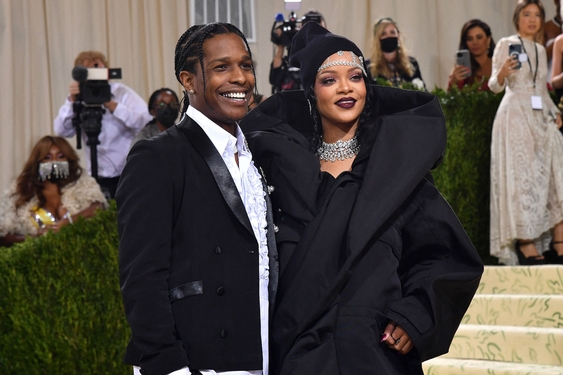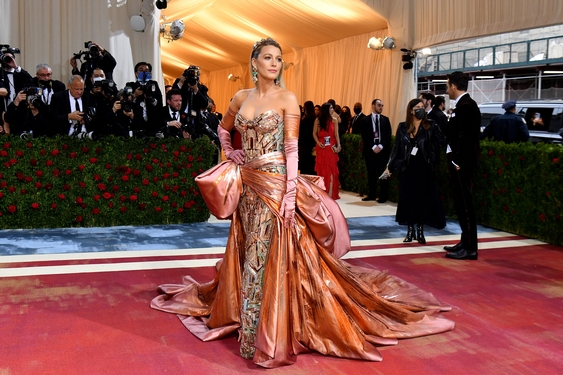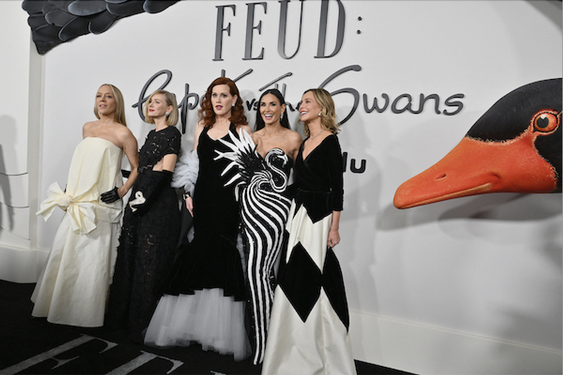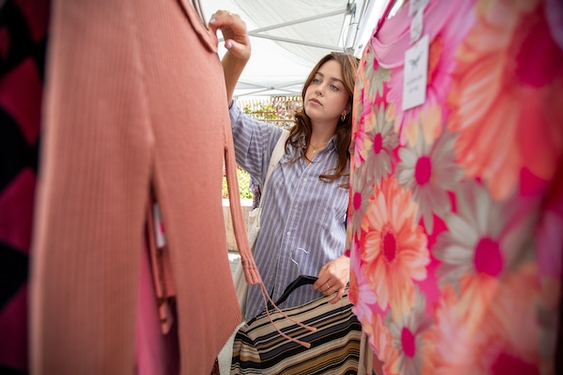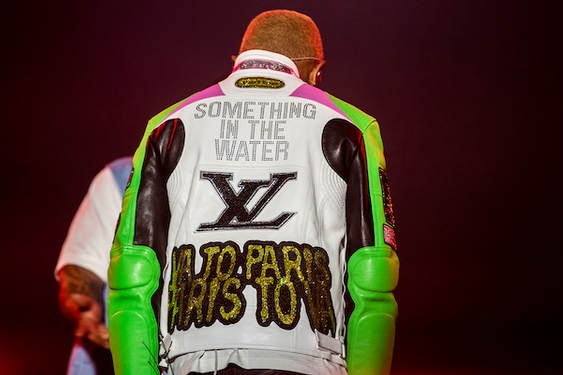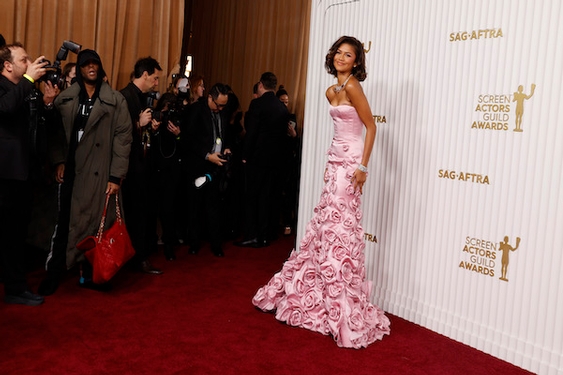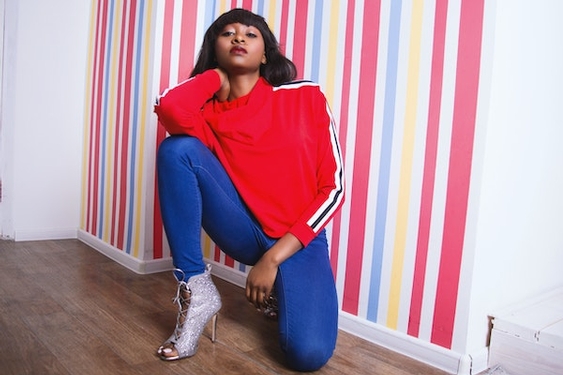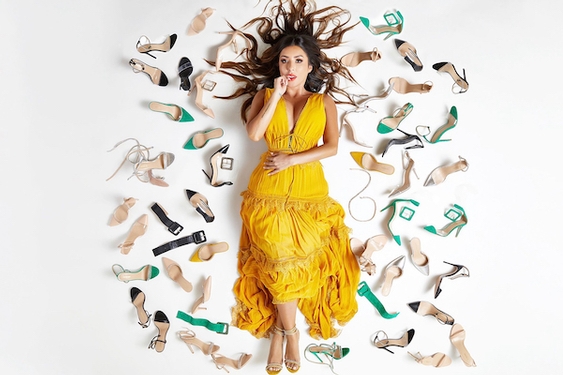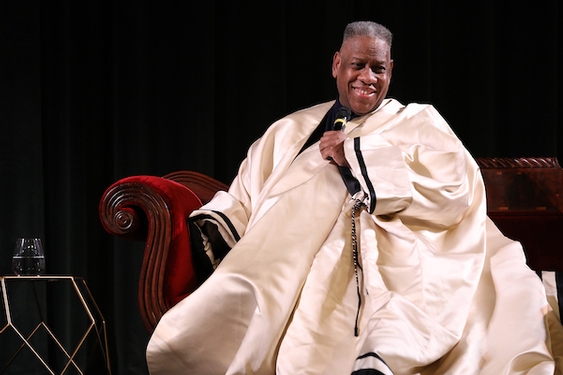Christian Louboutin, the famed French shoe designer known the world over for his instantly recognizable sky-high stilettos with their iconic lacquer-red soles, sat down to talk about his inspiration, the difference between designing for women and men, and a not-to-miss hidden gem in Paris.
I caught up with the designer during her last stop on a three-city U.S. tour hosted by Nordstrom to celebrate his spring Optical Illusion collection.
This interview has been edited for length and clarity.
Q: Why do you think that your shoes are so coveted?
A: People say that God is in the details. A woman who is going to try on a pair of shoes, she might not see all of the detail which is there and all of the attention which is there, but she feels it, and that makes a difference.
I come from a feminine family. I have three sisters, all different, so I understand quite easily and quite deeply, from an early age, femininity, and the essence of femininity.
Q: When did you decide to become a shoe designer?
A: I wanted to design for showgirls, music hall girls since I was a kid. My first job was to work for showgirls at Folies Bergere as apprentice.
I was always interested in shoes as a small object that gives a huge power to the entire body. Shoes completely change the line of the body.
Q: What was your inspiration for the summer Optical Illusion collection?
A: I don’t start necessarily with a specific point. I was designing the summer collection in Rio, but before that, I went to Sao Paulo and took time to visit an exhibition of the artist Julio Le Parc. I was really impressed by the exhibition, so it actually stayed in me. So through the process of drawing, I realize that there a lot of things were coming around that. That’s been the biggest influence for that collection. But, I never design a collection that’s a theme that I want to build around. I didn’t even buy the book; it was too heavy.
Q: What image has been on your inspiration board the longest?
A: When I see something that I like, I probably tear it from a magazine. I put them in files, but I never look at them.
For the longest time? The bust of Nefertiti, in Berlin. I think there is always a nostalgia when you’ve known a specific object or a specific place, and it gets overexposed. But, still, the influence of that bust on me has been there forever. There is so much storytelling about the bust. I love that it’s always shown in profile — it has one eye missing, so there’s this sort of secret, which is revealed. There is something quite charming in this perfect beauty with something which is not there. It’s a very romantic vision for me.
Q: How do you approach sneaker design for your Run Luobi Run sneaker collection?
A: There is something about sneakers which I like as a designer. It’s completely a different process than designing a shoe. It’s almost like designing a car.
There’s definitely a lot of invention in sneakers. Men are totally not afraid to push boundaries with sneakers.
The interesting thing about sneakers is it has developed into men’s mentality as a type of escape.
I’ve always loved sneakers. I just can’t wear them all day long.
Q: What’s different about designing shoes for men?
A: It’s completely different. When I design for men, I don’t think of the posture, I think of the attitude, and the attitude is very different.
When a woman is trying a pair of shoes on, first it changes her body language. She’s going to look at herself in the mirror — herself. Turn her back, look at shoulder, and then the shoe.
A man trying on a pair of shoes — he’s going to see if it’s comfortable. His foot is sitting full on the floor, and maybe he’s going to stand up, but not even all of the time, and when he looks, he looks at the shoe, not his body.
So really, the shoe on a man still is detached from the body. On a woman, it’s an extension of herself. On a man, a shoe is an element.
Q: You travel nonstop. Any advice on making travel a better experience?
A: Learn to be a light traveler. Which means to be, how do you say, low maintenance.
When you know how to travel, you end up being streetwise and low maintenance, so it can bring you everywhere. When you are high maintenance, you don’t go very far.
Q: What’s one overlooked gem in Paris that shouldn’t be missed?
A: The Palais de la Porte Doree. It’s in the 12th arrondissement. It’s a masterpiece of decorative art. It’s an amazing building, and nobody knows about it.
Q: Tell me about the hotel and restaurant that you are opening in Portugal.
A: You know, it’s not actually a business thing or anything; it’s just a hobby. I have a house by the sea in Portugal.
I’ve always loved the idea of having a small hotel. It’s super low key. Low key outside and refined inside
Q: What’s down time for you?
A: Gardening, swimming reading. I’m reading a great book; it’s my second time reading it actually. It’s the first book by Yuval Noah Harari: “Sapiens: A Brief History of Humankind.” He’s a very funny character, and definitely a visionary.
Q: What music are you listening to?
A: I’ve been listening to a lot of country music lately.
Q: You were just in Nashville, so Dolly Parton?
A: Of course.
Q: What song best describes you?
A: That’s difficult. It’s a song by Marilyn Monroe called “You’d Be Surprised.” I love that song. Between that one and a song by Dietrich, which is called “The Laziest Gal in Town.”
Q: Describe your shoes in a word?
A: Beautiful!
———
©2019 Chicago Tribune
Visit the Chicago Tribune at www.chicagotribune.com
Distributed by Tribune Content Agency, LLC.



